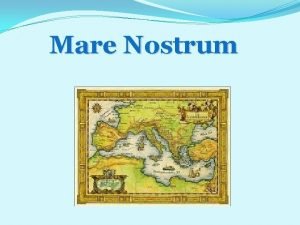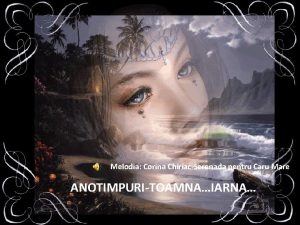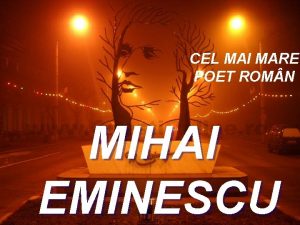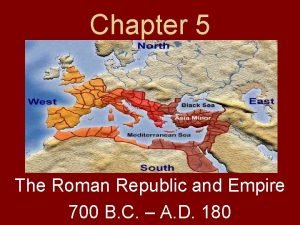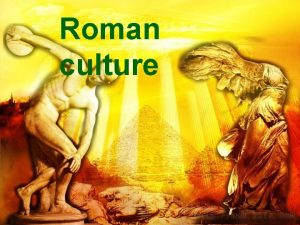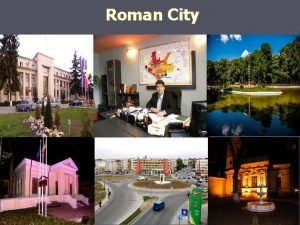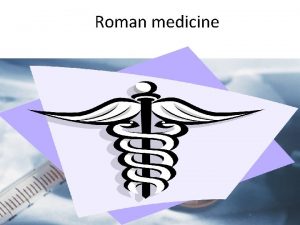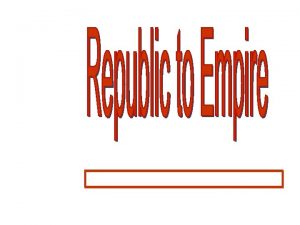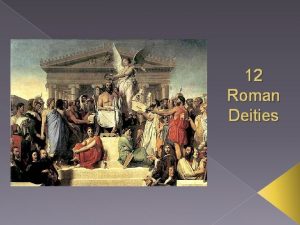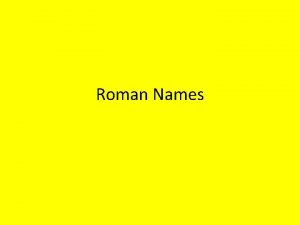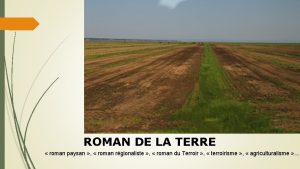Mare Nostrum Mare Nostrum was the Roman name

















- Slides: 17

Mare Nostrum

Mare Nostrum was the Roman name for the Mediterranean Sea, an inter-continental sea situated among Europe, Africa and Asia. It represents a real connection for the Mediterranean basin territories. It is considered as the main scene of the history and culture of the western countries.


The Roman Naval History Rome had a strategic position due to its climate and its geographical nature. By the end of the VI century b. C. , the Romans became more powerful thanks to their rule over the whole Mediterranean Sea. In 260 b. C. the Romans faced their first sea battle against Carthage, the major naval and commercial force of that period, carrying off a victory and achieving complete mastery of the inland sea.

The pirate attacks While the Romans were the indiscussed Mediterranean masters, the pirates were stronger than ever because of their main activity of slaves trade. When the pirates began to damage the Roman trades by sacking temples and towns, the Romans reacted cruelly. In fact pirates attacks caused a lack of wheat supplies with the consequent increase of prices.


The Roman ships Throughout their history, the Romans were great knowers of the art of building ships, applying sophisticated and innovative techniques in mechanics, hydraulics and naval architecture.


Military ships The Romans used a particular military boarding device, called corvus or harpago, in naval warfare. a system of pulleys allowed the raising up and lowing down of this bridge. Spikes shaped as birds’ beaks pierced the enemy ship's deck, thus allowing a firm gripping. As the Roman naval skills developed , the corvus device was less usefull and then it was used no more.


Merchant ships During the Imperial period was used an extraordinary typological variety of ships from vessels for short and medium-length coastal voyages, to large merchant ships, including a range of vessels for fishing, auxiliary ships and other particular functions. Their names depended on their origin and hull shape such as corbita, gaulus, ponto, cladivata. From a technical point of view, however, there was a certain typological homogeneity among these vessels as a consequence of the exchanges across the mare nostrum.

The Roman ships of Albenga The Albenga wreck was a Roman cargo ship found at 42 m depth, excavated and investigated in 1950. The ship was probably capable of carrying 10, 000 amphorae. The ship sank in the waters of Albenga in the 1 st century BC. These were full of Campanian wine together with pottery and crockery. It is the largest known Roman freighter ever found in the Mediterranean.



The goods The Romans imported: -amber from the Baltic Sea -silks and damasks from the Chinese -blown glass from the Phoenicians -parchment from Pergamon -perfumes, cosmetics and textiles from the Anatolian -an alloy of gold and silver from Lydia -iron from Poland

The city of Rome required large quantities of food daily: -wheat -meat -cheese -oils -vegetables -wines They also needed timber, coal, wool, cotton, spices. All these goods were transported mainly by ships across the Mediterranean Sea.

 Mare nostrum rome
Mare nostrum rome Caru mare satu mare
Caru mare satu mare Cel mai mare poet roman
Cel mai mare poet roman Decembrie george bacovia comentariu
Decembrie george bacovia comentariu Name
Name Difference between roman republic and roman empire
Difference between roman republic and roman empire Roman republic vs roman empire
Roman republic vs roman empire Hình ảnh bộ gõ cơ thể búng tay
Hình ảnh bộ gõ cơ thể búng tay Slidetodoc
Slidetodoc Bổ thể
Bổ thể Tỉ lệ cơ thể trẻ em
Tỉ lệ cơ thể trẻ em Chó sói
Chó sói Tư thế worm breton
Tư thế worm breton Bài hát chúa yêu trần thế alleluia
Bài hát chúa yêu trần thế alleluia Môn thể thao bắt đầu bằng chữ đua
Môn thể thao bắt đầu bằng chữ đua Thế nào là hệ số cao nhất
Thế nào là hệ số cao nhất Các châu lục và đại dương trên thế giới
Các châu lục và đại dương trên thế giới Công thức tính thế năng
Công thức tính thế năng
